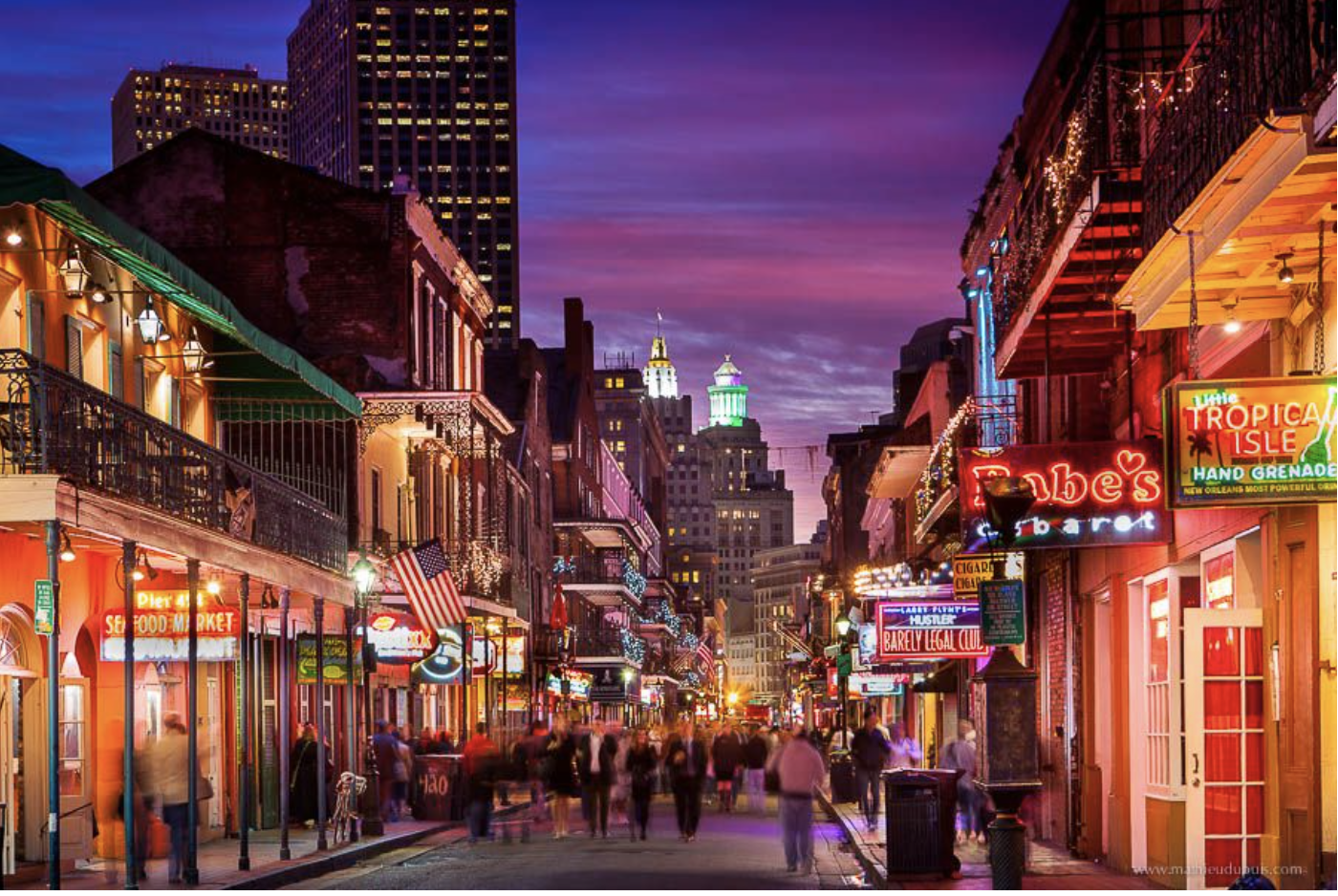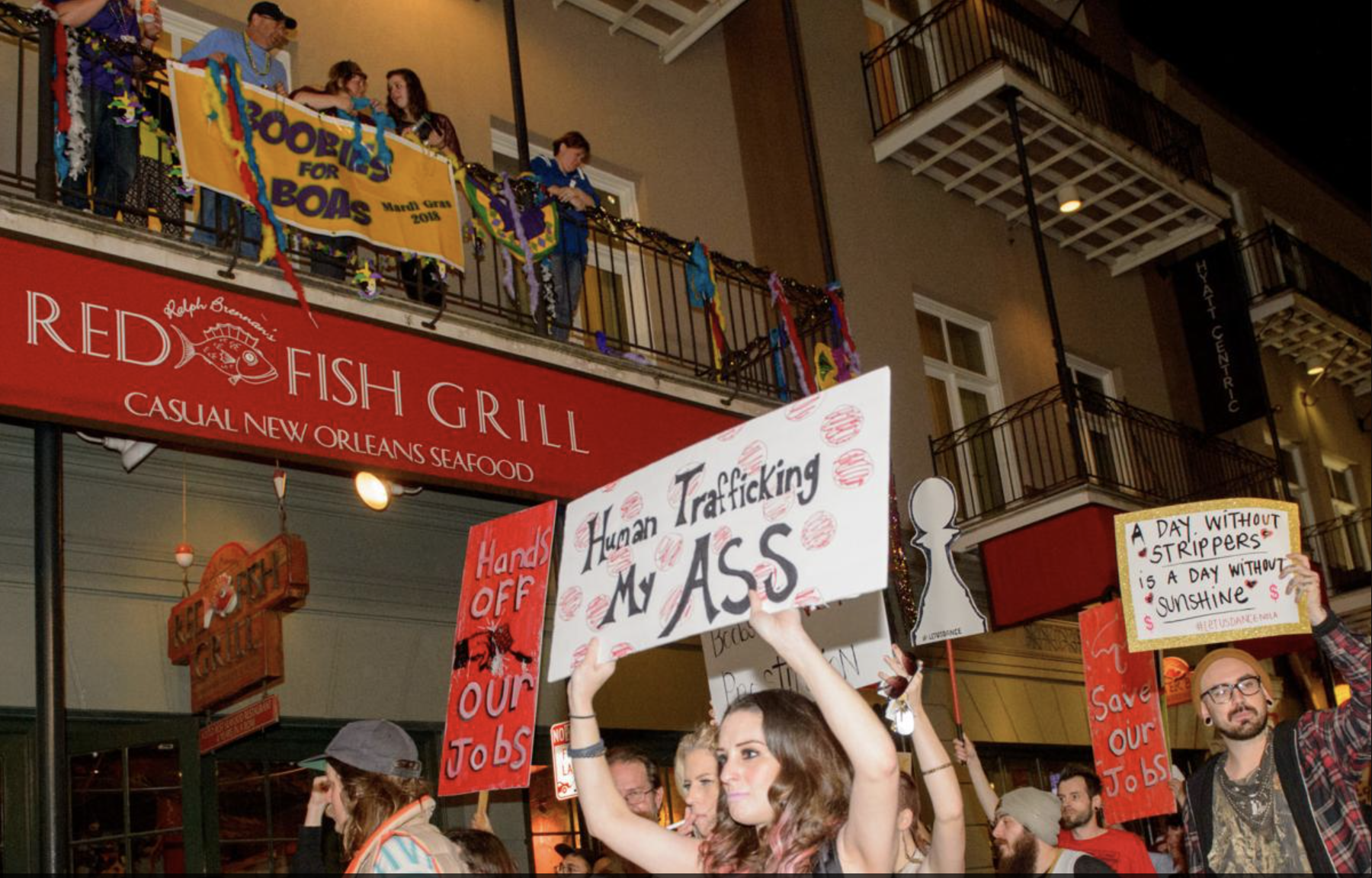Editor’s Note: Bourbon street, like New Orleans, is a place like no other. Anything goes in this iconic street; it has often been referred to as “the life of a party town” and “a place for revelry of all sorts”. It appears as if even the most erratic behaviors are legal there. In Bourbon Street partygoers have liberties like open-container drinking and public nudity, which are illegal everywhere else. The street has a never-ending selection of bars and restaurants with different music genres and themes that cater to even the most unique of tastes. The liberties allowed on Bourbon Street often bring to mind the question of “How is this legal?” and have given New Orleans a wild reputation. Famous musicians like Mannie Fresh attest to this reputation saying, “When a lot of people are calling it a night at 2 AM, New Orleans is coming alive,” comments such as these have made New Orleans nightlife iconic. People travel across the country to come let loose and lose their inhibitions in Bourbon Street, especially during Mardi Gras when the city sees an influx of approximately 1.4 million people. The party reputation of New Orleans and the spotlight placed has brought many benefits like tourism to the state but has also resulted in a lack of attention towards more serious issues. New Orleans has deeply entrenched issues regarding its prison system and inequalities with race. Preoccupying stories about how women in the Orleans parish prison can get sterilized to reduce their prison sentence and how prison labor is comparable to slavery don’t get half the attention of stories about the best bars in Bourbon. It would be useful to open people’s eyes to the realities of New Orleans and give attention to the issues that need resolving shifting from people asking, “How is this legal?” to “How is this not illegal?”. This piece was originally published on September 29, 2021.
Type in the word “stripper” on Google. There you’ll find dozens of photos showing women wearing nothing but bedazzled bras, hot pink thongs, and six-inch platform heels. Under related searches, you’ll find women in crop tops and booty shorts, movie reviews for Hustlers, advertisements for local pole dancing classes, and flight suggestions for the best “strip club cities” in America including New Orleans, LA.
Once you’ve arrived in the iconic city of New Orleans, order an Uber to Pat O’Brien’s on 600 Bourbon Street, take a stroll, and take it all in. Listen to the sounds of jazz echoing in the streets from Maison Bourbon, breathe in the smells of rum and melon liqueur fuming from Tropical Isle, and take note of the beaming smiles radiating from tourists.

Bourbon Street Nightlife (photo from: nightlifeinn.com)
Now, walk a little further down to 423 Bourbon Street. There you’ll encounter rock ‘n’ roll, large neon signs, and half-clothed women standing in front of clubs such as the “premier Gentlemen’s club,” Hustler’s Barely Legal. While Bourbon Street is famously known for its live adult entertainment, this certainly isn’t the only place you can find entertainment like this. With just one click of the TV remote, you can watch Channing Tatum’s striptease in Magic Mike or Jennifer Aniston’s pole dance routine in We’re the Millers. Additionally, New Orleans isn’t the only city frequented for its adult entertainment. Stripping is seen constantly in mainstream media as well as in clubs throughout the U.S; yet, in 2018, clubs such as Rick’s Sporting Saloon, Temptations, Hustler’s Barely Legal, and Dixie Divas were all legally served. This legal action taken against these clubs was in response to allegations that had been simmering for years regarding human trafficking in the strip club industry. Despite the fact that police found no evidence of this, law enforcement still served legal notice to clubs. Following the charges, police raided the clubs, threatening to close many down. While police claimed these raids were to protect the city and the women from illegal activity, many people who work in the strip club industry believed otherwise. The attempt to close down the strip clubs on Bourbon seemed like it was intended to purify the city more, making it more “palatable for… tourists.” While the city was worried about cleaning up its image for the tourists, it was neglecting to consider its residents: the strip club workers themselves. Meanwhile, these very women helped to fuel the flourishing tourism on Bourbon Street today.
In the 1940’s and 50’s, New Orleans was deemed “The Most Interesting City in America”, with its main attraction being Bourbon Street nightlife. Tourists dressed up in glamorous attire to go see exotic dancers, risqué singers, and eccentric contortionists perform at clubs such as the Sho Bar, Casino Royale, and the 500 Club. Club owners recognized the untapped potential that the industry held and began competing with each other to see who could draw the largest crowd. Some of the women began creating unique acts in order to further their individual careers. One woman, Lily Christine the Cat girl, who was considered the top attraction on Bourbon, drew a crowd so large that the line extended an entire block even during a hurricane warning. 2018 was not the first time law enforcement tried to raid Bourbon’s strip clubs and shut them down. In the 1960’s, New Orleans’ district attorney, Jim Garrison ordered police raids of strip clubs in an attempt to “clean up” Bourbon Street.
Throughout history, stripping has been a highly stigmatized profession; therefore, women who are strippers are often not seen as respected professionals. Unlike other jobs, strippers do not receive sick leave, medical coverage, retirement funds or legal protection. Even worse, they’re often not seen as respected people. During a raid at Rick’s Sporting Saloon in 2018, police officers forced some of the strippers to change in front of them. When one woman resisted, an officer repeatedly told her that she “lost her right to dignity when she decided to become a stripper.” These raids inevitably shut down many clubs temporarily while zoning investigations were conducted and laws were enforced.
While others may not recognize strippers’ self-worth, strippers certainly know their own. The strippers began protesting in the French Quarter preaching “Hands off our jobs!” and “We are not victims.” While law enforcement reiterated that the raids were aimed at trying to protect both the women’s and the city’s safety, the strip club workers viewed this action in another light. They saw these raids as a blatant attack on their profession and an addition to the existing stigma surrounding it.

Strippers Protesting Club Closures on Bourbon Street (photo from: Nola.com)
What is often disregarded in discourse surrounding the stripping profession is that it requires extremely hard work. The work strippers do is both physically and mentally exhausting. Physically, in the sense that hauling oneself up a twelve-foot pole in six inch heels takes a lot of practice and a lot of strength. Additionally, some strippers may give private dances to twenty-five men a night. People often don’t realize that to dance like this requires these women to develop stamina, flexibility and the ability to tolerate dozens of ejaculations. Stripping is mentally draining in the sense that strippers are expected to maintain high levels of enthusiasm and energy constantly while on stage or in private rooms.
Additionally, many people tend to criticize the stripping profession because they couldn’t possibly imagine someone wanting a job like that. This myth can be disproven, as many strippers who protested in 2018, exclaimed that “[they] work in a strip club because [they] want to. [They] don’t need to be saved.” Some women who wanted to be professional dancers own the stage and feel empowered when stripping. Some choose the profession because it’s an exciting, non-traditional job to pay the bills. And, some women who end up in the stripping industry felt entranced by the glamorous life of partying it offered and just decided to stay. Just like any occupation, some people love it, and some people don’t.
When law enforcement tries to shut these clubs down to try and “purify” the city, they totally disregard these women and their profession. They’re not considering the fact that closing these clubs down leaves these women jobless, struggling to send their children to school or pay their rent. The social stigma surrounding the stripping profession also makes it difficult for these women to find a new job when “exotic dancer” is listed as their most recent employment. These women shouldn’t be degraded for choosing to work in a strip club. One thing for sure is that these strip club workers know that they are a resilient community. They know that no matter what, “people will always need what [they] offer – intimacy without responsibility.”
 NOLAbeings
Multimedia artist Claire Bangser created NOLAbeings as a portrait-based story project that marries...
NOLAbeings
Multimedia artist Claire Bangser created NOLAbeings as a portrait-based story project that marries...
 Data corner: Adobe Suite (create a PDF, social media graphic, presentation, edit a photo and video
Data corner is where you go to work with analytics and top tech skills. It takes on everything from PERL and SQL to Canva and Sprout Social.
Data corner: Adobe Suite (create a PDF, social media graphic, presentation, edit a photo and video
Data corner is where you go to work with analytics and top tech skills. It takes on everything from PERL and SQL to Canva and Sprout Social.
